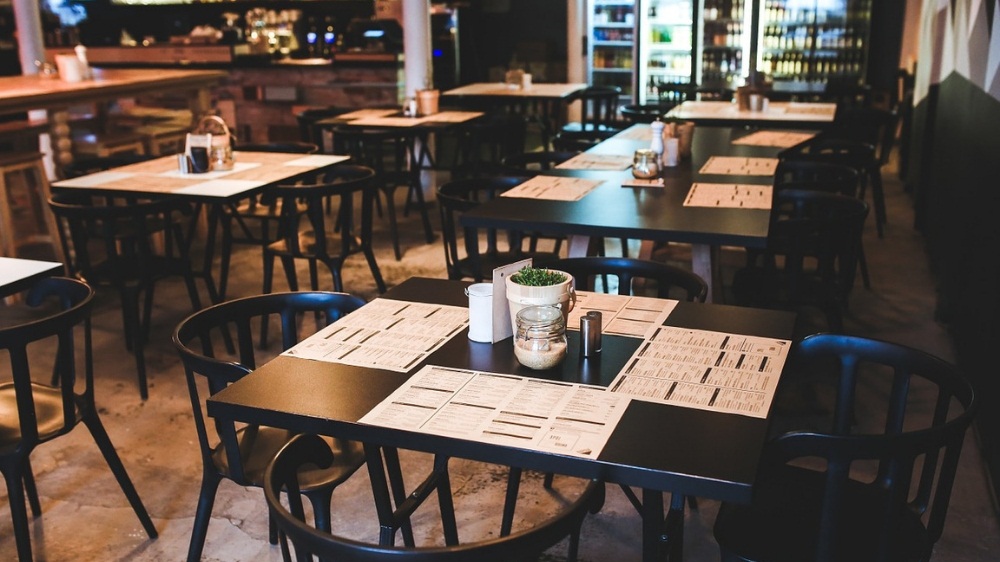
Opening a restaurant with no money sounds like a stupid idea. However, it is the dream of many aspiring chefs and food entrepreneurs to have a restaurant of their own where customers come to try their dishes, and the rich aroma of food fills the place. But their dreams get shattered because they do not have the money or capital to own a restaurant. Realistically speaking, it is not possible to open a restaurant with zero money.
However, if you have minimum capital, resources, and the will to do something, it is possible to get your business going. A restaurant can be started even from your kitchen if you have the right business plan. So, in this comprehensive guide, we’ll be helping you understand how to open a business in a step-by-step process.
Read more: 10 Fiber-rich foods for Diabetics
What no money means.
By ‘no money,’ it doesn’t mean that you won’t have to spend a single penny. Because it is the truth that to start something, you need to have something. You just do not need to invest a large amount or take out a loan from day one. Instead, do this:
- Sweat Equity: Invest your time, efforts, and skills. They are your primary and most important investments.
- Bootstrapping: Start by investing small and reinvest the profit back into your business.
- Leveraging Existing Assets: Use the efforts you have already or the ones you can borrow from your friends or family.
This approach demands efficiency and commitment to focus wholly on the outlet.
The steps to open your restaurant with no money
1. Crafting a blueprint
Before starting your business, you need to have a solid plan or a blueprint on how to open your restaurant. You need to know what resources you currently have and how to properly utilize them.
Concept
- Start small. You do not need a huge business plan or a big restaurant to start. Smaller businesses are easier to manage as there is less equipment and fewer staff members. Also, You need to decide what kind of dishes you are going to make, like fast food, continental, seafood, tiffin boxes, etc. Because if you just focus on one food genre, you only need to buy the ingredients for that.
- Master one or two dishes so that your restaurant is known for your special dish. If people get to know about your dish, they will either tell their acquaintances about it or try other items from your restaurant. This will help you as indirect advertisement. And try to cater to specific needs like gluten-free, keto-friendly, or organic.
- You need to know what type of customers you are getting. This helps to tailor your menu, pricing, and marketing.
- You need to know about the business market. Like who your competitors are, are they doing better than you, what is your value, and is there any demand for your dishes?
Crafting a business plan
Create a concise and actionable plan.
- Executive Summary: Summarize your details. Like the concept of your restaurant, who are you serving, and how do you plan to make money
- Product/Service: People need to know the details about your menu, like the description, ingredients, and USP (Unique Selling Proposition)
- Market Analysis: Analyze your market. Your target audience, competition, and market trends.
- Operational Plan: How will you prepare the food, serve it, and deliver it? It is crucial for “no money” ventures.
- Financial Projections (Minimum Viable): You need to estimate the bare minimum startup costs (licenses, initial ingredients), pricing strategy, and break-even point. How quickly can you generate revenue?
- Revenue Model: Will you offer dine-in, takeaway, delivery, catering, or a mix? For "no money," focus on delivery/takeaway initially.
Understand Legalities & Licenses (Non-Negotiable)
These are often fixed costs, regardless of your capital. Research them early.
- FSSAI License: Mandatory for any food business in India.
- Shop & Establishment Act License: Required for commercial establishments.
- Health Trade License: From your local municipal corporation.
- Fire Safety Certificate.
- GST Registration: If applicable.
- Trademark Registration: (Optional, but good for branding).
- Partnership Deed/Company Registration (depending on your legal structure).
- Cost-Saving Tip: Start as a sole proprietorship to minimize initial legal fees. Research specific state/city requirements, as these can vary (e.g., Faridabad municipal rules).
Read more:Ice Cream Prices to Become Hot this Summer
2. The Location—Creative & Cost-Effective Solutions
Traditional storefront rent is often the biggest killer of "no money" dreams. You need to think outside the box.
Ghost Kitchen / Cloud Kitchen:
Concept: A commercial kitchen facility solely for delivery and takeaway orders, with no dine-in space.
Benefits: Extremely low overheads (no front-of-house staff, less prime real estate required).
Options:
Rent a dedicated cloud kitchen space: Numerous providers in India offer shared or private kitchen units.
Co-working culinary spaces: Shared kitchen facilities with common equipment.
Shared Kitchen Time: Renting kitchen space during off-peak hours from an existing restaurant, café, or hotel.
Best for: Maximizing reach through food delivery apps (Swiggy, Zomato).
Pop-ups/Temporary Venues
- Concept: Try choosing specific locations and setting up a temporary food stall.
- Benefits: Low commitment, minimal setup costs, great for testing concepts, building buzz, and generating initial cash flow.
- Locations:
Flea Markets: Rent a small stall.
Food Festivals & Local Events: Prime opportunities for exposure.
Collaborate with Existing Businesses: Partner with a local pub (without a kitchen), café (with an unused evening kitchen), or retail store to set up for a few hours or days. They get foot traffic; you get a location.
Home Delivery Kitchen (Strictly Regulated): In some areas, with proper licensing and hygiene, you can operate a small delivery kitchen from your home. Crucial: Check local municipal laws thoroughly.
3. Funding—Getting Ingenious with Capital
This is where "no money" truly comes into play. Your initial capital will come from unconventional sources and extreme frugality.
Know this: What Is Cold Brew Coffee? Facts You Must Know
Leverage Sweat Equity & Skills
Most of the work of your business is done by you as a chef, manager, marketer, delivery person, and cleaner. This will save salary costs. You also need to advertise your restaurant. So you have to perform marketing of your business too. Design a simple logo, build a website, and post videos on social media. Try gaining support from your personal network too. Ask a friend or family member for things they might not need but that will be of use to you. Don’t be afraid to ask for monetary help.
Extreme Bootstrapping
Find secondhand equipment from online marketplaces (OLX, Quikr), local dealers, or restaurants. For expensive equipment, consider renting or leasing initially to conserve cash. Offer your cooking services or food in exchange for help with marketing, repairs, or small equipment. Also, money earned in the beginning of your business should go straight to investment in your restaurant.
Friends & Family (Loans/Small Investments)
Approach trusted friends or family members for small, interest-free or low-interest loans. Even with loved ones, put everything in writing (loan agreement, repayment schedule) to avoid misunderstandings. Offer a tiny percentage of your business in exchange for a small investment, but be very clear about terms.
Read this: What is LTO Food? Limited-Time Offer Definition and Meaning
Crowdfunding Platforms
Platforms like Kickstarter, Ketto, or Milaap can be used to raise initial capital by pre-selling meals, offering unique dining experiences, or selling branded merchandise.
Also, you can present your compelling story, unique food concept, and what the funds will be used for. Offer attractive rewards to backers.
Microloans & Government Schemes (Post-Initial Traction)
While difficult to secure with no track record, once you've shown some initial sales and operational proof, you might qualify for:
Mudra Yojana: A Government of India scheme providing microcredit loans to small businesses.
Other SME/Startup Schemes: Research state-specific or national schemes for aspiring entrepreneurs. These often require a basic business plan and some proof of concept.
4. Operations—Lean, Mean, and Delicious
Every decision needs to be made with cost-efficiency and maximum impact in mind.
Menu Engineering for Profitability
A limited menu means less inventory, less waste, and simpler operations. You should focus on dishes with high ingredient markups. And choose such ingredients that can be used across multiple dishes to reduce inventory complexity and spoilage. Buy seasonal ingredients from local vendors. This way, you can reduce the costs and support the community. Only buy in bulk if you have guaranteed demand and proper storage to avoid waste. Only keep the essential equipment. Like the one you need to make your core menu. A single stove, a small refrigerator, and basic utensils. Choose such equipment that can serve multiple purposes.
Staffing
Initially, you will be doing everything: cooking, cleaning, marketing, taking orders, and delivering. Or you can ask your family/friends to volunteer to help during peak hours. Or you can hire a part-time worker when absolutely necessary and your revenue supports it.
Know this: Top Vietnamese Coffee Brands Making Trends in India
Marketing on a Shoestring Budget
Try to advertise your food through different methods like:
- Social media
- Word-of-mouth
- Local Partnerships
- WhatsApp Marketing
- Loyalty Programs
5. Growth & Sustainability
Once you've launched and are generating revenue, the challenge shifts from opening with no money to growing sustainably. Resist the urge to spend the profit you just earned. Every extra money should go back into improving your business (better equipment, more inventory, modest marketing). Also take feedback from customers and use it to refine your menu and operations. Don’t rush to expand your business. Firstly, master current operations and then think about others. Never compromise on the quality of your food or service. This will build you a good reputation.
Conclusion
It's not easy to open a small restaurant with "no money." It necessitates unmatched commitment, tremendous selflessness, astute preparation, and an unrelenting quest for effectiveness. Your culinary dream can, however, become a reality by embracing innovative approaches to funding and location, adopting a lean startup mindset, and making the most of all available resources. It's a journey of fervor, tenacity, and demonstrating that an entrepreneur's unwavering spirit can sometimes be their greatest asset rather than their bank account.

Dining out is more than just enjoying a meal; it’s about the ambiance, comfort, and overall experience. Some people love the charm of outdoor dining, where they can soak in fresh air, scenic views, and natural light. Others prefer the cozy, controlled environment of indoor dining, with elegant interiors, soft lighting, and temperature regulation. Outdoor dining is perfect for those who enjoy open spaces, while indoor settings offer privacy and a more intimate atmosphere. But which one provides a better experience? The answer depends on personal preference, weather conditions, and the kind of dining atmosphere you seek.
Also check: Yamanto Central Debuts YUManto Dining Precinct and Play Area
The Great Dining Debate!
Imagine a peaceful evening with soft lights, a gentle breeze, and a plate of delicious food. Now, picture a stylish indoor space with soothing music, a comfortable seat, and the perfect temperature. Both settings create different moods, but which one is better? The answer depends on what you enjoy the most.
Check More: The Best Crockery Brands in India: Enhance Your Dining Experience
The Ambiance Battle: Fresh Air vs. Intimate Vibes
Outdoor dining brings you closer to nature. It is perfect for those who love open spaces, natural sunlight, and fresh air. Restaurants with rooftop seating, garden setups, or beachside tables make outdoor dining even more appealing. The sounds of birds chirping or waves crashing add to the experience.
Indoor dining, on the other hand, offers a more controlled and intimate environment. Soft lighting, well-designed interiors, and temperature control create a cozy setting. Whether it’s a romantic dinner, a formal business meeting, or a family gathering, indoor dining provides a sense of privacy and exclusivity.
Weather Woes: Sun, Rain, or a Chill AC?
One major factor that influences dining preferences is the weather. Outdoor dining is great in pleasant weather, but it comes with challenges. Summers can be too hot, monsoons can bring sudden rain, and winters can be uncomfortably cold.
Indoor dining eliminates these concerns. With air conditioning in summer and heating in winter, you can enjoy your meal without worrying about weather changes. It is the best option when comfort is a priority.
The Instagram Factor: Picture-Perfect Moments
For those who love clicking food pictures, the dining environment matters. Outdoor dining offers natural light, scenic views, and aesthetic setups like fairy lights, wooden tables, and garden themes. Restaurants featuring rooftop settings or oceanfront views create stunning backdrops for social media posts.
Indoor dining has its own charm. Luxurious chandeliers, artistic wall decor, and mood lighting make food look elegant. Many high-end restaurants design their interiors with Instagram-worthy aesthetics, making them ideal for stylish dining experiences.
Food & Flavor: Does the Environment Change the Taste?
Believe it or not, the dining atmosphere affects how we perceive flavors. Outdoor dining allows you to enjoy the natural aroma of fresh food. The fresh air can enhance your appetite and make meals feel more enjoyable.
However, indoor dining maintains food at the right temperature for longer. Controlled ventilation prevents dust or insects from affecting your meal. If you are dining at a fine-dining restaurant with delicate plating and gourmet dishes, indoor settings help preserve the taste and presentation.
Social Vibes: Where Do Conversations Flow Better?
Dining is often about socializing, and the setting plays a big role in conversations. Outdoor dining is ideal for lively gatherings, friendly meetups, and celebrations. The open-air setting makes people feel relaxed and talkative. Restaurants with open courtyards or live music events create a vibrant atmosphere.
Indoor dining is more suitable for deep conversations, romantic dates, or formal meetings. The controlled sound levels, soft background music, and comfortable seating allow for meaningful discussions without distractions.
Health & Hygiene!
After the pandemic, people have become more aware of hygiene and safety while dining out. Outdoor dining offers better air circulation, reducing the risk of airborne infections. It is a safer option when social distancing is a concern.
However, outdoor spaces are exposed to dust, pollution, and insects. Indoor dining areas are well-maintained, sanitized, and protected from external elements. If hygiene is your top priority, a well-reviewed indoor restaurant might be a better choice.
The Service Factor!
The quality of service can make or break a dining experience. Indoor restaurants usually provide faster and more efficient service since the staff is always nearby. Waiters can attend to customers quickly, ensuring a smooth dining experience.
Outdoor dining may come with slight service delays. Since outdoor tables are spread out, servers might take longer to reach customers. However, some restaurants have dedicated outdoor staff to manage service efficiently.
Price Tag & Availability: Does It Cost More?
Outdoor dining setups often require additional costs for maintenance, decor, and heating or cooling equipment. Rooftop restaurants, beachside cafés, and garden dining areas may have slightly higher prices than regular indoor dining spaces.
Indoor dining, especially in high-end restaurants, also comes with premium pricing. However, casual dining restaurants with indoor seating offer affordable options. The cost factor depends on the location, type of restaurant, and dining experience you choose.
The Verdict: Which One Wins?
There is no clear winner in this debate because the choice depends on personal preference. While some enjoy fresh air, scenic views, and social vibes, others prefer comfort, privacy, and consistency. At last, the choice totally depends on your mood and preferences.
Ultimately, the best dining experience is the one that makes you feel happy. Whether it’s a romantic candlelit dinner under the stars or a luxurious meal in a cozy setting, both options have their charm. The next time you plan to dine out, think about what matters most—ambiance, comfort, or adventure—and choose accordingly.

There are lots of challenges to be faced when you come out of a hotel. When you start a restaurant business on your own, you have to manage everything. Solving challenges is interesting. Here are a few things the owners of a restaurant startup must know before they start their business in Hyderabad.
Patience is a Must
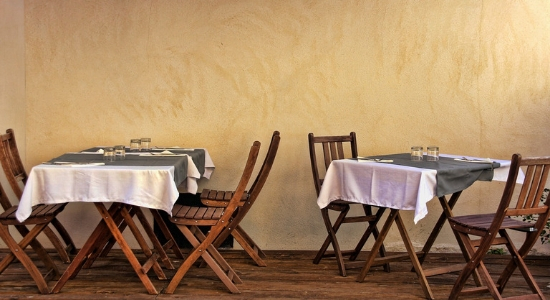
A restaurant is such a business where you put a lot of money and cannot expect the returns to come immediately. People have to have the patience to deal with it, and they should have the capacity to run the restaurant for the next 6-8 months from the pocket. You have to wait for a long time to get a return. It’s not easy like other businesses.
Also Read: 10-Step Checklist to Open a Bistro in Mumbai
Dependency on Manpower
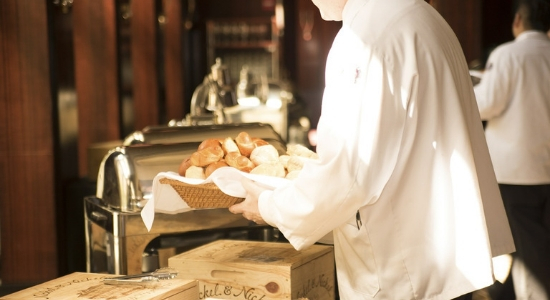
Most of the people depend on the chefs or other people like service staff at their restaurants. There are many restaurateurs who are unable to manage the cost or staff; they sometimes feel that their restaurant is about to shut and are willing to seek help. Getting good manpower is becoming a challenge. You need to trust the service staff, even if you aren’t at the restaurant. Many times, new and especially low-budget restaurants mix up with the roles of the staff, which is okay. But the challenge lies in hiring the best and trustworthy.
Rentals
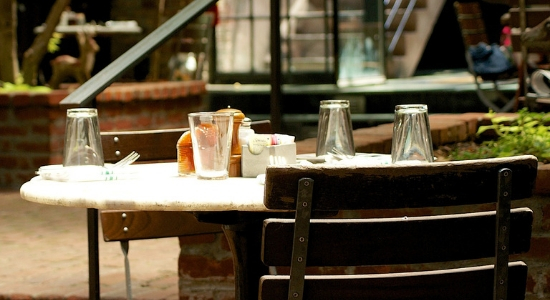
Rental aspects are important too. When people put things together they only look for the costs involved in building up the restaurant. They forget salary wages are around 24-26% of the revenue of the restaurant. The rental, sometimes, can go up to 20% also; all these have to be counted. Your pocket has to be deep enough to bear all the expenses.
Location

A location should be a prime concern. It is not that people do not travel for food. I have instances where people travel 25 km and call us while on the way that “there is traffic and we might get late”. I personally serve them when my staff leaves for the day. You need to be very careful while choosing a location keeping an eye on the footfall available in that area - is it a business estate or a residential.
Also Read: Restaurateur Shivam Sehgal Sees An Untapped Business Opportunity In Delhi’s Dwarka
All these things you need to keep in mind.
Chef Chalapathi Rao, fondly known as Chef Challu, is one of the finest chefs serving South Indian cuisines in Hyderabad and abroad. Click to Read Full Interview
As told to Sara Khan

Gone are the days when women worked only in their own home kitchens and the only chefs in professional establishments were men. The food industry in its ever growing, ever expanding form has seen a burst of women chefs creating magic in the kitchen. Some of the most popular and famous restaurants in the country are helmed by some formidable women.
These are no-nonsense, take-charge, superbly creative and talented women who are dishing out beautiful food you probably don't even know. They command and lead their army of cooks through exhausting lunch and dinner services with great ease and are the reason you have such wonderful dining experiences. As they say, if you can't stand the heat, get out of the kitchen!
Meet the women who are cooking up a storm!
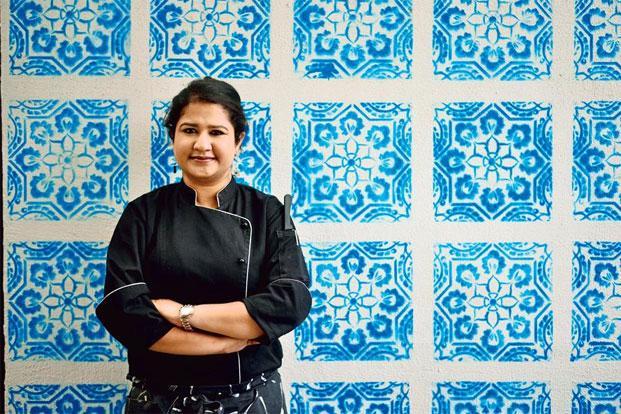
Stay Connected with Food
TV has brought food into the living room of homes. This transcending of boundaries has led to more awareness about cooking and opened more opportunities for women to join the food industry workforce.
Currently heading the kitchen at Lavassa by Savy, Megha Kohli, has already garnered an experience of eight years in the industry at the young ageof...
When asked the most innovative thing she has ever done, Kohli says,” Picking up an unheard cuisine like Armenian and basing my entire restaurant on this cuisine was a big risk as I had no idea how the public would accept it.”
Megha’s mantra, however is, that cooking is an emotional process and not a technical one. You can serve the most exotic of perfectly prepared dishes, but if you haven’t connected with the food while making it, it’s an effort gone waste.
Talking about her achievements, Kohli says,” My biggest achievement is Lavaash. And to see it grow and do so well is a dream turned reality.
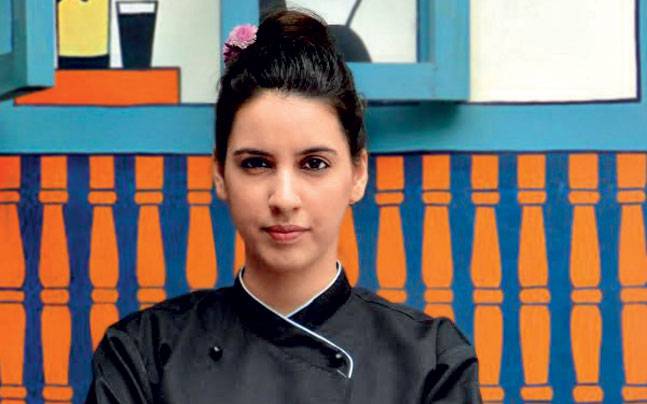
On Par with the Best
Women have always been considered kings of the kitchen. Then why is it so difficult to accept that she can don the chef’s hat in high-end restaurants? From pastries to food trucks, women in India are now ready to make a mark on the culinary scene. Titled as the youngest Chefin Delhi,
Born into one of the most unique communities of India and around the world, little did Anahita Dhondi know that her Parsi cultural identity will get her to this situation, where she becomes the face and influence to one of the most successful restaurant chains around the country.
When asked about the differences she has noticed in the Food Industry, Anahita says,” Well, this is a male-dominated industry, and it isn’t easy for a female to get in or adjust and own a restaurant.” you have to train your mind to be stronger," Dhondy says, speaking of her training and how being a young woman in the restaurant industry can be quite a struggle.
For Anahita, more than the recognition, she identifies the strength of character that she has gained as real benefits of being a chef.
In a candid conversation, she shared,” The trends like Regional cuisine, seasonal produce are going to stick around.”
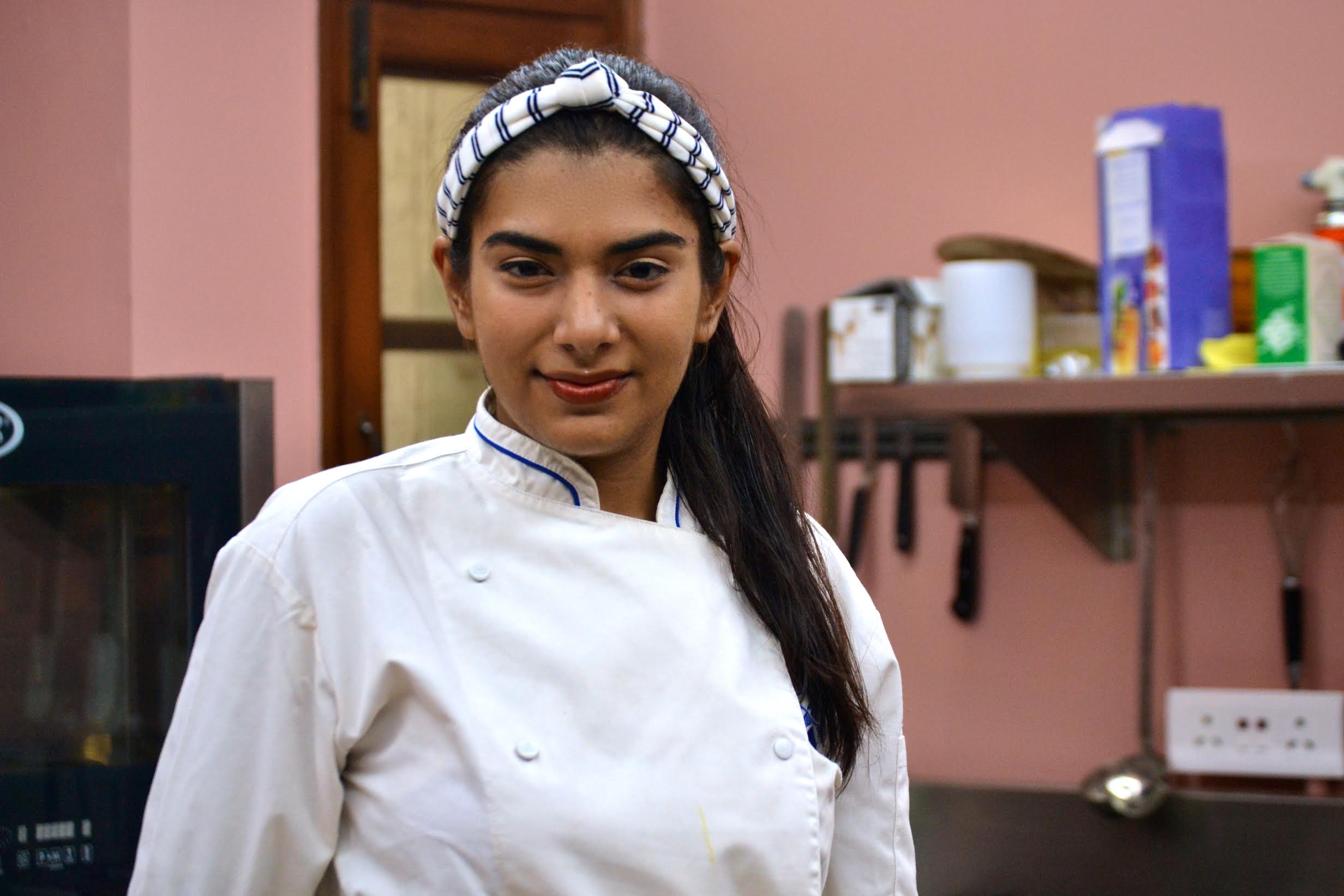
Damsel in Desserts
Encouraged by cookery shows, more women are donning the chef's hat or establishing new ventures in the city.
This 27-year-old is responsible for New Delhi’s biggest sugar rush so far. Le Cordon Blue trained, Bani opened Miam meaning yummy in French, three years ago with an aim to popularise French neoclassical entremets. Patisserie chef Bani Nanda has definitely brought a little bit of Paris to Delhi, and who can complain when that happens.
When asked about her motivation, Bani says,” I guess it’s my creativity that keeps me going. There is so much more that I have yet to master, so much more to achieve, and dearly follow the success stories of so many entrepreneurs, chefs and restaurant owners.”

The food industry, which is currently valued at US$ 39.71 billion, is expected to grow at a Compounded Annual Growth Rate (CAGR) of 11 per cent to US$ 65.4 billion by 2018. Food and grocery account for around 31 per cent of India’s consumption basket.
The Indian food processing industry accounts for 32 per cent of the country’s total food market, one of the largest industries in India and is ranked fifth in terms of production, consumption, export and expected growth.
It contributes around 14 per cent of manufacturing Gross Domestic Product (GDP), 13 per cent of India’s exports and six per cent of total industrial investment. Indian food service industry is expected to reach US$ 78 billion by 2018.The Indian gourmet food market is currently valued at US$ 1.3 billion and is growing at a Compound Annual Growth Rate (CAGR) of 20 per cent. India's organic food market is expected to increase by three times by 2020.
The Confederation of Indian Industry (CII) estimates that the food processing sectors have the potential to attract as much as US$ 33 billion of investment over the next 10 years and also to generate employment of nine million person-days.
Coming up with a restaurant is not a cake walk but the most difficult part of this business is to be in the game, for which it is important to build the restaurant brand:
1. Define Your Restaurant Brand:
India is a home for foodies, which is one of the reasons why the number of restaurants, fast food corners and production of food products are multiplying themselves on daily basis.
Thus to stand out in the crowd, it is important to define your restaurant brand and to define that one needs to answer some vital questions before going forward:
Who are you?
What are you doing?
Why are you doing it?
In short keep your unique selling point (USP) clear in your head. These answers will help you in figuring out the basic idea of starting the business in the first place and will even push you in putting efforts to build the brand.
2. Brand Positioning:
There is a combination of four aspects that draw revenue for the brand and they are: Product, Price, Place and Promotion.
Brand positioning, helps in directing and narrowing down brand awareness to the target audience.
It will solve a number of problems such as identifying the key partners, who will help in the investments, key activities, on how to proceed further, determining value positioning, customer relationship, key resources, distribution channels, cost structure and revenue stream.
Research reports seem to indicate that Indian consumers seem to be patronising Italian cuisine the most, gulping down pizzas and pastas. Chinese comes next. This, reports say, is largely fuelled by young consumers aged 14-45 years.
3. Get Technologically Connected:
The technological bug has bitten everybody and if you still live in that old school thought bubble, of promoting or marketing on newspapers and radio ads, then time to burst it and hit the social media for promotions.
Social media alone has produced many restaurateurs, food bloggers, chefs, who have become online celebrity.
Internet and technology create convenience, so take advantage of it to create the kind of space people look forward to returning to. Look at your market and ask yourself what kind of conveniences technology can offer them.
Offer free wi-fi to customers, online gaming space for kids or you can create a technologically themed space, these can fetch you a lot of families and children.

What made you enter into food business?
I was always foodie, always wanted to get into this industry. If there’s anything in which I’m interested that is food. From a very young age at home, I was in innovating food. I always had that thing in me which I wanted to come out with. Whatever experience I have gained, I want to give it all to my restaurant.
What innovations you had made?
There are many speciality restaurants in Kolkata but there’s not a restaurant where there are two speciality cuisines under one roof with true sense of that cuisine. I had made that possible with two executive chefs each one expert of both the cuisines i.e., North Indian and Oriental. There are even two different menus accordingly. If you see the menus, both the menus are very different from the food you get normally in Kolkata. I don’t have Chicken bhurta or Butter Masala; each item is different either it is North-Indian or Oriental like we have a special recipe called Kumbh Galoti which is Mushroom Galoti Kabab.
What makes your restaurant different from others in Kolkata?
You can find speciality North Indian restaurant, you can find speciality Oriental restaurant but you won’t find both at the same place. Also it is a place where we do not compromise at quality. We prepare menu according to the guest without even compromising on quality. We have achieved whatever we want to because customers blindly say that it is the best Oriental or North Indian we have ever tasted in Kolkata.
Where do you get your supply of raw materials from?
I get Chicken & Mutton from New Market as I do not want to compromise on the quality. Also I make ensure to buy the product daily unlike other places just to have fresh one.
How do you see changing market segments affect the food service industry?
It really affects a lot. You need to understand the market properly as every place is different. I understand Kolkata very much because I’m born and brought up here but if it would be some other place, I would have thought ten times before investing. As Kolkata people are price sensitive, quality sensitive and taste sensitive; it makes the task real difficult to understand a complicated market like this and satiate all the needs at the same time.
How do you see the customer response?
We have witnessed a very pleasing customer response. Our ambience is at par with five stars environment with really low price. Also, the best part of The Palms I would say is service. People say that it’s really difficult to gain a service experience like this anywhere else in Kolkata. We usually give our customers a comment card and if somebody has commented wrong then we call the customer directly and take the cause in consideration. We try to build an interaction with customer. We want to establish our restaurant in hearts of people and then will expand with different genre.

Small Restaurant Business Plan
Every foodie, more than once in his/her life, has decided to open a café or restaurant, where he/ she can spread the magic of taste in and around the locality.
People from different areas, regions have different taste, some like spicy, some like sweet and some like a mix of both spicy and sweet, one cannot just compromise with the taste, when one is paying his/her hard earned money in it.
NRAI IFSR 2016 estimates that the total contribution of the restaurant industry alone will contribute 2.1% to the GDP of India by the year 2021.
Riyaaz Amlani, President, NRAI has said, "The total food services market today stands at INR 3, 09, 110 crores and has grown at 7.7 % since our last report in 2013. This is projected to grow to INR 4, 98, 130 crores at a CAGR of 10% by 2021."
Here are a few points to help aspiring restaurateurs and entrepreneurs to start a restaurant business:
Restaurant Business Plan : Decide what to offer
Food is one thing, which holds the power to make people forget all the tensions of work or life. And there are plenty o restaurants, where one can find the authentic local cuisines or regional delicacies.
You have to decide before hand what you are going to offer to the customers, who already have their favourite dishes being served in their favourite restaurant. You ought to have something unique and the best to offer or else the customers would not find any reason to visit your restaurant.
Restaurant Business Plan : Thorough Planning
A well begun thing is half done, thus if the concept as to what kind of restaurant you want to open, should it be a high-end fine dine restaurant or for casual diner or cuisine specific or microbrewery or pub or simply quick service restaurant.
Moreover the proper planning with estimated future goals, expected profits and expansion plans will be help the banks in developing trust on your business, where the loans and financial aids come into play.
Restaurant Business Plan : Discover the Location
One can find a number of restaurants in every busy street, which serve from continental to Asian to French to Indian food. Thus look for a location, which does not get lost in the herd of restaurants in that locality.
It should not be far from the herd, neither should it be in the centre, but somewhere near the entrance or ground floor.
Restaurant Business Plan : Look for Investors
Opening a restaurant is no child’s play; it requires a lot of money. Opening a small QSR will cost around 1.2-1.8 crore, that too only to set it up, excluding the production cost and staff salary payments.
Thus look out for investors, who will fuel your dreams to take the first leap. There are plenty of investors and banks ready to help you, provided authentic documents, honest intentions.
Restaurant Business Plan : Licenses and permits
The required documents, licenses and work permits should be kept ready before opening the restaurant.
Obtaining business licenses is the doorway for any business industry to roll.
Proper legal procedures about taking the lease area and license to serve alcohol in that area and proper ventilation in the kitchen, safety standards in case of emergency should be taken care of even before laying the foundation stone of your business.
Restaurant Business Plan : Hire smart staffs
Ultimately, restaurants are known for the kind of food they serve, the hospitality and aura of it.
Thus a chef, who is master in his skills, staffs, who are not just educated robots but smart in their work are important for a restaurant to run smoothly.
Accountant, who will take care of the bills, salary of staffs, profits earned, losses bore and every money related matters.
Feeding a hungry soul is the noblest job on this planet. So go ahead to do a noble job and earn profits out of it as well, doesn’t it sound like a perfect plan!

You have launched restaurants in different categories. Which according to you is the most revenue generated model and why?
The food and beverage industry is one of the most exciting and challenging sectors to be as the overheads and government taxation changes every year with the introduction of the budget. The QSR segment, which was earlier known as fast casual sector (Loco Chino) is our most profitable venture keeping in mind the quick turnover, economies of scales and less overheads with the increasing outlets.
On an average, every outlet caters to about 250-300 orders a day wherein an average spend per consumer is about Rs250- Rs300. It generates good volumes and thus provides efficiency in the area of economies of scale.
We see that these days, investors are keen on investing in casual dining chain. What is your opinion?
According to an independent survey, the fast casual dining segment is seeing an annual growth rate of 21 per cent, which constitutes to about 42 per cent of India’s 75,000 crore restaurant industry. The change in demographics with working families who have at an average two meals out on a given week has seen this industry grow at a booming rate and it will only grow on from here. Mobile application and Internet-based ordering has only helped boost the takeaway model for such outlets and thus increased the volumes of business.
What are the essentials that you incorporate in all your restaurants to serve authentic foods?
We solely believe in serving the highest quality of food at the most affordable prices. Around 75 per cent of our ingredients are imported to maintain the authentic taste buds. We also believe in serving fresh and healthy food and thus we are very stringent on our standards. We use no artificial colour or preservatives and also use no MSG (monosodium glutamate) in any of our ingredients. We have also set up an in-house Research and Development Team to cater to the new trend of progressive molecular gastronomy.
How important is design in a restaurant business? How have you incorporated design in all your restaurants contrasting it with the cuisine?
The most critical and vital key in this sector is to be clear on your concept and to get it right. Once we build the concept of the restaurant, the look, feel and the vibe caters to delivering it out in a clean and fresh environment. For example, with Loco Chino, a revolutionary concept serving the best of a Live Tex-Mex station and Chinese, we have used bamboo dim sum boxes as lights and our walls are painted with lively Mexican Characters and Sombreros are worn by our service team. With Asado, being Mumbai’s only Latin American Restaurant, we have transformed the place into a street in Argentina, with three dimensional paintings giving you the vibe of Casa Batlio (street in Buenos Aires) in Argentina. The sky has been painted with clouds, we have birds perched on the lights and the street lamp posts all around to give you the cosy ambience of a lively street and coupled with great Latin music specially curated for the place.
What is the supply chain process at your restaurants?
We believe in centralising our supply chain systems and believe in leveraging with the local vendors. Around 75 per cent of the ingredients are imported from quality suppliers and vendors throughout the world through a systematic supply chain network created in-house. Even with local vendors, we have yearly contracts with approved FSSAI vendors to maintain the quality and to counter any price fluctuations that may appear for a period of 12 months. Centralised ordering, quality checks and then the dispatch to outlets help us maintain the consistent quality in all our products. Centralised inventory along with par stock for all perishable and non-perishable items has helped us in the successful execution of our supply chain systems.
What is the marketing strategy you incorporate to promote your brand?
Customer is king and customer satisfaction is very imperative. Building a customer database is the biggest asset for us. After successfully building a great customer database coupled with some critical information such as birthdays and anniversaries, we make every customer special and a part of our ever- growing family. Coupled with technology and the growing social media, customer rewards is the most important key to have, not only to repeat and satisfy consumers, but also to keep building the database. We are soon launching a ground breaking loyalty programme where the consumer can garner points on any of the outlets and this can be redeemed at any of our outlets.
What was the initial investment that you made? Are you looking for external accruals?
Balu Hospitality is a self-funded hospitality company. We believe in adding value to every restaurant we launch. We believe in complete growth of not only our external stakeholders, but also the most vital internal stakeholders which will drive us forward and a complete all round development of our large Balu family together.
What is your expansion plan?
We are very aggressive with expansion in all our formats. We look at having about 50 Loco Chino outlets by the end of 2017 which will not only include the metros but also Tier-1 and Tier-2 cities.
We have placed considerable attention to keep the model scalable and at the same time increasing our customer database day in and day out with expansion across geographic territories. Mumbai, Delhi and Bengaluru will be lined up this year followed by the other metros and cities in the next year.
We shall expand all our formats in the Indian Metros. This is just a stepping stone and yet we have miles to go before we can compete with some of the leading F&B Companies in the country.
Copyright © 2009 - 2025 Restaurant India.







